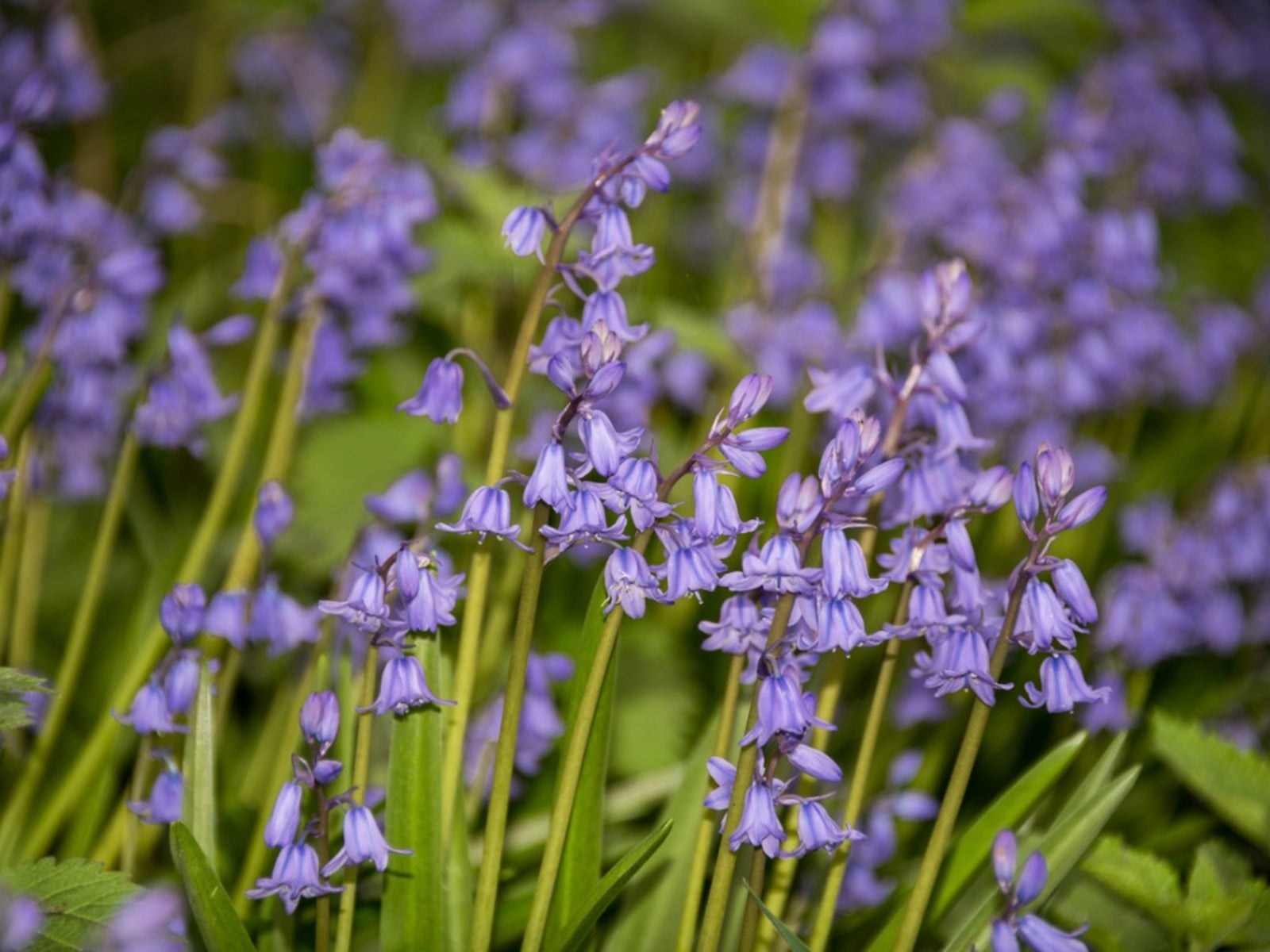When spring arrives vibrant blue bell-shaped flowers seem to appear everywhere, adding charm and color to gardens fields, and woodlands. These dainty blooms ring in the season with their delicate, dangling bells in calming shades of blue, purple, and sometimes white.
Blue bell-flowers come in many delightful species, ranging from ground covers to tall border plants. Their shapely blooms and refreshing hues are highly anticipated harbingers of spring.
Identifying Common Blue Bell-Shaped Flowers
Many of the most popular blue bell flowers belong to the Campanulaceae family of plants. This includes campanulas lobelias and platycodons. Here are some of the most common types to recognize
Campanula
Over 500 species of Campanula offer a diversity of blue bell-flowers The name “campanula” comes from the Latin word for “little bell,” Popular varieties include
-
Canterbury Bells (Campanula medium) – Large, cup-shaped violet-blue or white bells on tall stems. Biennial.
-
Bellflower (Campanula carpatica) – Low mounds of small blue or white bell flowers. Perennial.
-
Creeping Bellflower (Campanula rapunculoides) – Spreading vine with purple-blue nodding bells. Perennial.
Lobelia
Brilliant blue lobelia displays abundant tiny bell blooms on bushy foliage:
-
Blue Lobelia (Lobelia erinus) – Intense blue flowers on trailing annual plants.
-
Cardinal Flower (Lobelia cardinalis) – Tall spikes of bright red bell flowers. Perennial.
Platycodon
Commonly called balloon flowers, platycodon bear inflated buds that open to flaring bell blossoms:
-
Dwarf Balloon Flower (Platycodon grandiflorus) – Pale blue or white bell flowers on compact perennial plants.
-
Chinese Bellflower (Platycodon grandiflorus) – Large blue or white balloon-like blooms. Perennial.
Charming Woodland Blue Bells
Two wildflowers famous for carpeting forests in blue are bluebells and Virginia bluebells. These spring ephemerals create a sea of blue under the bare branches of deciduous trees.
Bluebells
Bluebells (Hyacinthoides non-scripta) are symbols of spring in European woods. The tubular violet-blue bells dangle in onesided arcs along slender stalks. Their sweet scent and delicate charm have inspired poetry and legends. Bluebells spread rapidly to form violet haze in shady areas.
Virginia Bluebells
In eastern North America, the arrival of Virginia bluebells (Mertensia virginica) signals spring. Their tubular sky-blue flowers nod gracefully in loose clusters on tall stems rising above oval leaves. The short-lived spring blooms disappear by early summer. Virginia bluebells thrive in moist woodlands and along stream banks.
Blue Bell-Shaped Flowers for the Garden
Many showy blue bell flowers add beauty to flower beds, borders, and containers. These provide long-lasting color in the garden:
-
Bellflowers (Campanula) – All species offer gorgeous blue bells. Try spreading Bellflower Campanula carpatica or tall spires of Campanula lactiflora.
-
Balloon Flower (Platycodon grandiflorus) – Striking blue globes open to flaring starry bells.
-
Canterbury Bells (Campanula medium) – Large cup-shaped flowers in blue, pink or white. Biennial but self-seeds.
-
Siberian Bellflower (Campanula sibirica) – Lovely blue slender bells on clumping perennial.
-
Blue Fringed Bellflower (Campanula cochlearifolia) – Mounds of dainty blue bells with fringed petals.
Caring for Blue Bell-Shaped Flowers
Most bellflowers thrive in partial sun to light shade. They prefer evenly moist, well-draining soil. Fertilize in spring and prune dead stems after flowering. Campanulas spread readily so give them room. Balloon flowers need full sun and moderate water. Canterbury bells self-seed freely.
To enjoy more blue bells each year, plant different early, mid, and late blooming varieties. Deadhead spent flowers to prolong blooming. Bellflowers and lobelias also grow well in containers.
The Delicate Beauty of Blue Bells
When planning spring flower gardens, be sure to include some blue bell-shaped blooms. Their distinctive form and soothing color evoke feelings of happiness and refreshment. As author Marion Zimmer Bradley wrote, “The touch of the flower is the touch of love; its blue bell rings peace like a dove.”
With their diversity and adaptability, lovely blue bell-flowers provide many options to harmonize with any garden design. Plant some this spring and let their peaceful beauty ring in the changing seasons.
Featured Articles by Season




Ask Your Gardening Question
If you’re unable to find the information you need, please submit your gardening question here:
Bluebell Gardening | Tips and Tricks for Growing Beautiful Blooms
FAQ
What is the spring flower that looks like a bell?
What plant has blue bell-shaped flowers?
What perennial has blue bell-shaped flowers?
What is the blue flower that blooms in spring?
What does a Bluebell plant look like?
The Scottish bluebell is a delicate, charming perennial plant with blue-violet bell-shaped flowers. Pretty purple-bluish flowers dangle in clusters or singly at the end of slender, thin stems. The bell-shaped flowers bloom from late spring and throughout summer. Scottish bluebells grow 12” to 18” (30 – 45 cm) tall and up to 12” (30 cm) wide.
Are bluebell flowers a sign of spring?
These beautiful flowers are typically associated with the start of spring. However, there are more bluebell flower species than you might think. In fact, there are even some blue bellflowers that are worthy of being planted in a backyard garden.
What are the different types of bluebell flowers?
There are several different types of bluebell flowers, including the Spanish Bluebell, the Wood Anemone, and the Canadian Blue Bell. Each type has its own unique characteristics, so it’s important to learn how to identify them correctly. What does a bluebell symbolize? Bluebells are often associated with springtime and new beginnings.
What are hybrid bluebell flowers?
Hybrid bluebell flowers are a cross between the Spanish bluebell (Hyacinthoides hispanica) and the English bluebell (Hyacinthoides non-scripta). The low-maintenance plant is perfect for borders, rock gardens, or naturalizing in wooded areas.
- The Ultimate Guide to Growing Strawberries in Raised Beds - August 8, 2025
- No-Dig Garden Beds: The Easiest Way to Grow a Beautiful Garden - August 6, 2025
- How to Protect and Preserve Wood for Raised Garden Beds - August 6, 2025

